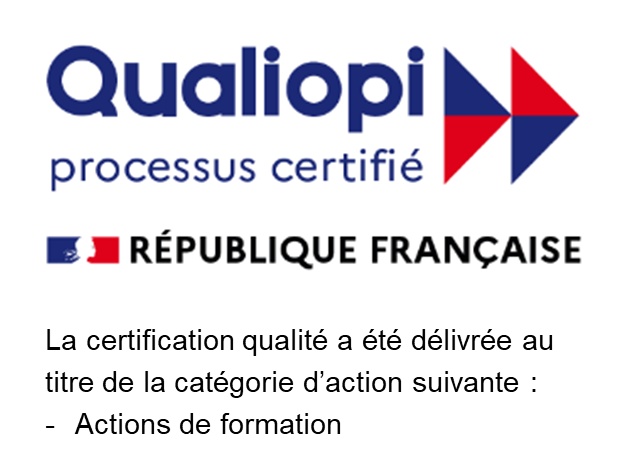CULTURAL COMPLIANCE: THE COST OF IGNORING CULTURAL DIFFERENCES WHEN DOING BUSINESS

In today’s demanding global market, organizations go to great lengths to ensure their compliance with a variety of laws, regulations, and ethical standards. But since all three of these vary from country to country, have you ever considered the value of intercultural dexterity on an employee’s ability to ‘be’ compliant in countries other than the ones they were raised in? Or an organization’s ability to truly understand the reasons behind negative outcomes when something has gone wrong? Miscommunication and misunderstandings during intercultural exchanges can be costly, resulting in lost sales and business opportunities, hefty fines, sanctions, or being banned from doing business in critical markets altogether. Conversely, being culturally compliant saves businesses time, money, valuable resources and, in extreme cases, even lives.
Developing cultural agility — the ability to understand different cultural perspectives and adapt one’s behavior to various scenarios to navigate smoothly across diverse cultural landscapes — is often overlooked, but it’s as crucial to being compliant as knowing and understanding each country’s rules and regulations themselves. Incorporating cultural agility into compliance training and readiness — what we call “cultural compliance” — has therefore become mandatory when it comes to the success and sustainability of global organizations, worldwide. In this topic paper, we discuss why cultural compliance, which addresses training in cultural agility, should be a mandatory component of every organization’s compliance plan. Thanks to technology and a wealth of experience, NetExpat is able to provide this training easily, on a variety of platforms, with as little commitment as half a day for expats and an hour for global business travelers/employees who interface with individuals from cultures other than their own.
Why should cultural compliance matter to organizations?
In the NetExpat Intercultural Landscape Survey - 85% shared that intercultural compliance training should be a mandatory employee offering in global organizations - provided as a part of onboarding and leadership training and including toolkits on improving self-awareness and cultural blind spots.
List of services
-
Values Differ From One Culture to AnotherList Item 1
Cultural values play a large part in the rules a society creates and enforces — but also in the ways its citizens perceive and adhere to them. It’s necessary to understand these differences, particularly when an employee that’s deeply influenced by their own culture will be doing business with a culture whose values and communication styles are vastly different.
-
Rules and Regulations Range from Fixed to FlexibleList Item 2
Depending on where you are in the world, the people and governing bodies that make the rules have different ideas about whether rules are meant to be bent or broken. Some cultures value consistency, so they tend to enact more rules and regulations, enforce them more severely, and have little to no tolerance for exceptions or differences in the way individuals behave during intercultural exchanges. In other cultures where the tolerance for flexibility is higher, there may be fewer regulations, a higher acceptance of extenuating circumstances, and a willingness to bend the rules to achieve a mutually desired outcome. Knowing how a culture defines and perceives rules and regulations — and training your employees on a culture’s nuances and best communication practices — is therefore crucial when addressing the intercultural exchanges and procedures that impact organizational productivity, safety, and success.
-
Culture Influences BehaviorList Item 3
Cultural perceptions of rules have a strong impact on its residents’ behavior: everyone from enforcement agents in immigration and customs departments to the business stakeholders companies deal with once they’re on the ground doing business. When employees who come from one culture encounter officials, clients, potential business partners, or colleagues with different cultural values, a lack of cultural agility could cause costly unintended ethical conflicts, communication errors that thwart business opportunities, or misunderstandings that prevent much-needed business travelers, goods or equipment from being admitted into a country. In short, understanding the cultural norms of individuals from different cultures, the expectations being placed on them by their local governments, and the motivation behind their actions, is a requirement for bridging communication gaps. And when the cultural expectations of one culture clash with the ethical requirements of another, it also helps both parties find the common ground that’s required for business goals — and relationships — to move forward.
Still not convinced? Consider the examples below:
Communication Style Gaps Can Impact Safety

Imagine an airline pilot who comes from a culture where direct, clear communication is valued, working with a co-pilot whose culture is not only ingrained with an indirect communication style that softens or hides the speaker’s true intentions and avoids conflict - but whose culture has also taught them that it would be disrespectful to assume that a supervisor doesn’t have a full grasp on their responsibilities in every scenario. If the co-pilot is afraid to speak up when s/he notices a problem with the engine or navigation system that the pilot doesn’t — and every second counts — how many lives could be in danger because the airline they work for wasn’t culturally compliant and failed to provide both with intercultural training? When we consider factory floors, laboratories, virtually
anywhere safety is paramount, cultural compliance is more than just a nicety; it’s a necessity.
Humor Isn't Always Funny

During a past business trip, a NetExpat employee recalls passing through a U.S. immigration checkpoint when his traveling companion began to joke with the inspection officer, as he would have in his native France. The senior-level executive was both surprised and annoyed when the
officer detained him for an extended period of time, but his behavior had raised suspicion among the immigration officers, who expected a more formal and respectful demeanor during the inspection process, as a U.S. law enforcement institution. Had the French National been made aware of the differences between the two countries’ processes, the delay and his embarrassment
could have been avoided. What’s more, if the NetExpat employee hadn’t been with him and vouched for the executive, the officer stated that he may have been denied entry altogether.
When Well-Intended Gestures Destroy Good Will

In a meeting attended by C-suite executives from multiple cultures, hopes were high for a
collaborative effort between the teams and organizations that were in attendance. Those hopes were shattered when a Brazilian male executive repeatedly touched the arm of an American female executive. In Brazil, it’s quite common to stand or sit very close to another individual when speaking, and placing a hand on someone when talking to them to show interest, solidarity, and trust. The female executive, however, came from a culture where this behavior was seen as an invasion of her personal space without prior consent. Extremely offended and uncomfortable with this level of contact, she exploded in anger. Because of this lack of cultural understanding on both sides, the spirit of collaboration was replaced with discomfort, embarrassment, confusion — and irreparable damage that impeded the productivity and long-term goals of both organizations.
These are just a few of many scenarios that illustrate the dangers of not making cultural intercultural training mandatory. Cultural miscommunications and missteps can also damage a company’s reputation, result in losing a business license, cause a rise in warehouse injuries, or even lead to jail time. When global companies expand their employee ethics and compliance training to include cultural compliance training, employees can navigate cultural differences with skill and integrity — fostering positive relationships while meeting both business goals and objectives.
For more information on how NetExpat can help your organization and its employees become culturally compliant, contact us, at info@netexpat.com
Share this post














